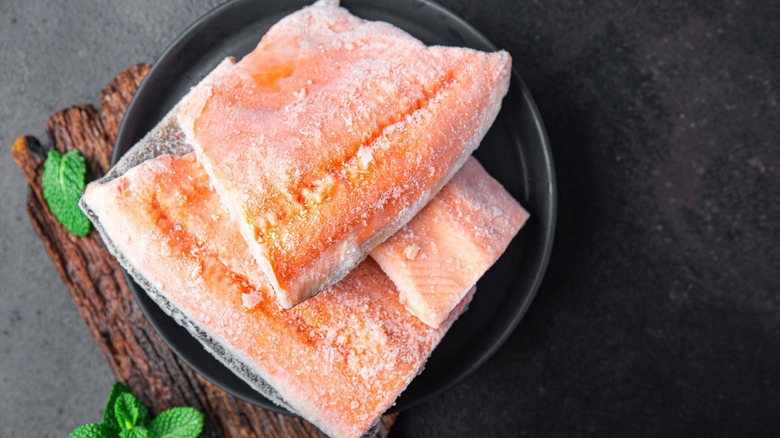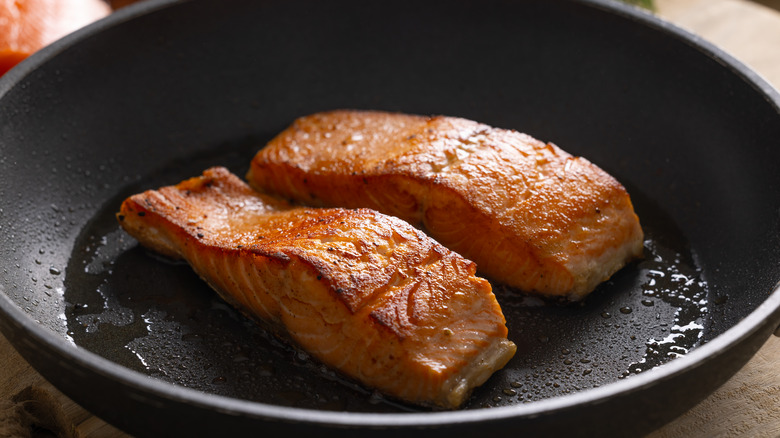The Safest Way To Quickly Defrost Salmon
Freezing is a highly convenient way to make sure your food supply stays in good quality for months and remains safe for consumption. However, getting your food from frozen to ready-to-cook requires careful planning and handling.
The most recommended method for defrosting salmon is to let it defrost in the refrigerator for hours, or at least overnight. Microwaving is the quickest, but there's a chance you will end up with fish that's dry in sections; it's hard for food to heat evenly in the microwave, even when you check it in intervals while it thaws. Cold water offers the safest and quickest defrosting method. It keeps the food safe from reaching the danger zone — the temperature range where bacteria thrives — while also preserving its delicate texture.
Choose a bowl large enough to contain the fish and fill it with cold water. Next, transfer the frozen salmon into a resealable plastic bag; when defrosting several pieces, put each piece in its own container. Seal the bags and place them in the water with the sealed side up to prevent water from leaking into them. Place a plate on top of the bags to keep them from floating. Change the water in the bowl every 30 minutes to keep the fish from reaching room temperature. Use this opportunity to check if water has entered the bags so you can drain them since letting the fish sit in the leakage could affect its quality.
Some cooking methods don't require frozen salmon to be thawed
Thawing salmon in water takes anywhere between one to four hours, depending on its size and thickness, but you can't skip it if you'll be cooking the fish on high heat. It must warm up evenly both on the outside and the inside to avoid burning. Thawing is also key to crisping up the skin on the salmon, which requires the skin to be dry and the fish at room temperature when it hits the pan. Frozen salmon is difficult to season, too, since the seasoning and spices would burn first even before the fish gets sufficiently cooked.
However, if you plan to pan-fry, bake, or poach the fish, you can cook it while it is still frozen since these cooking methods use a much lower temperature. You can also take out your air fryer if you're short on time and have still-frozen salmon on hand. Cooking frozen food safely and quickly is one of the best uses for this kitchen appliance. Just pat the fish dry with a paper towel, brush some olive oil on it, and season with salt and pepper. No matter the cooking method, flaky, opaque flesh is a sign that the salmon is cooked. Check this by inserting a paring knife between its layers.

